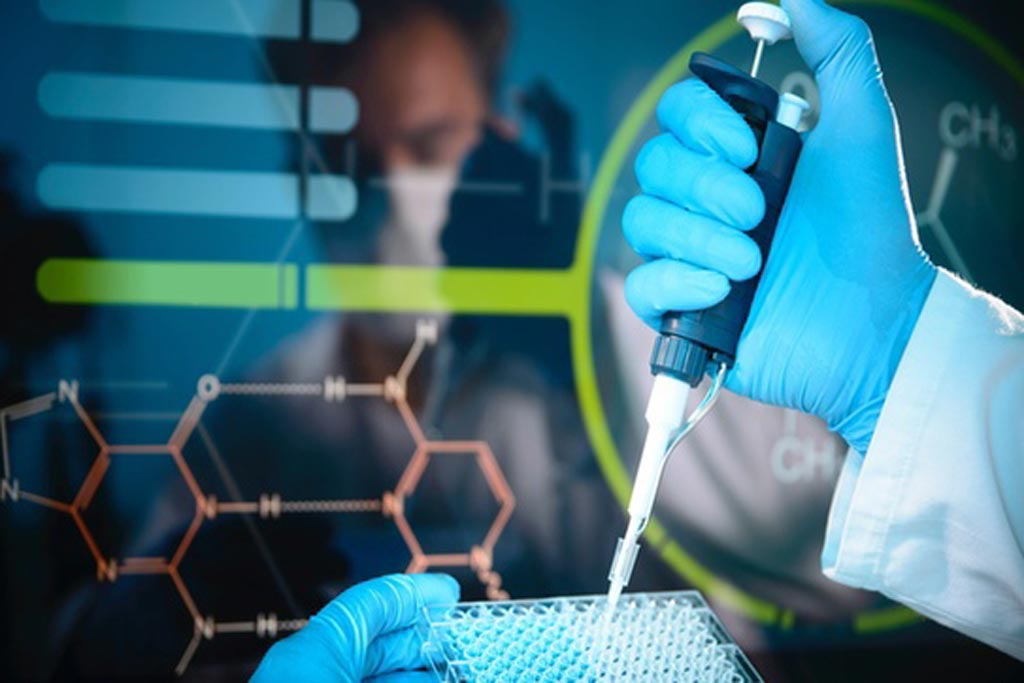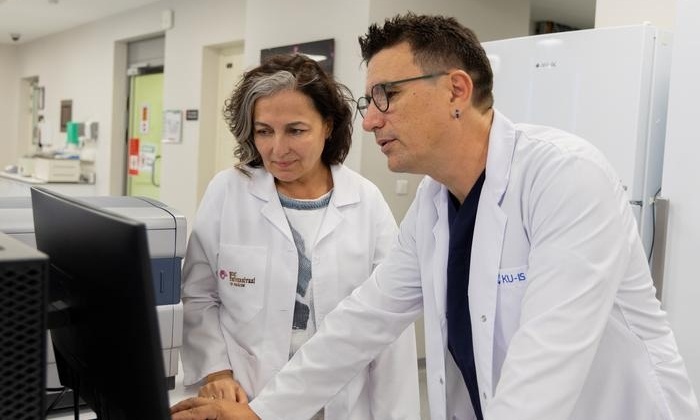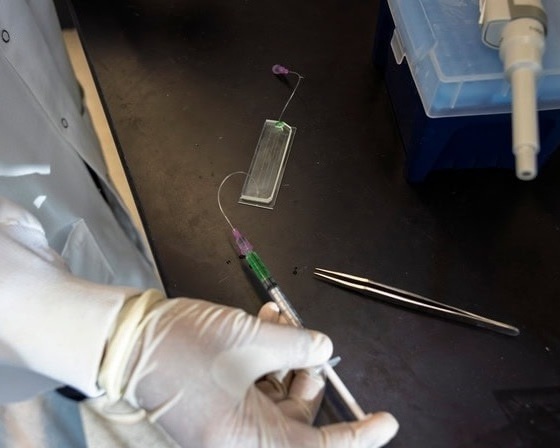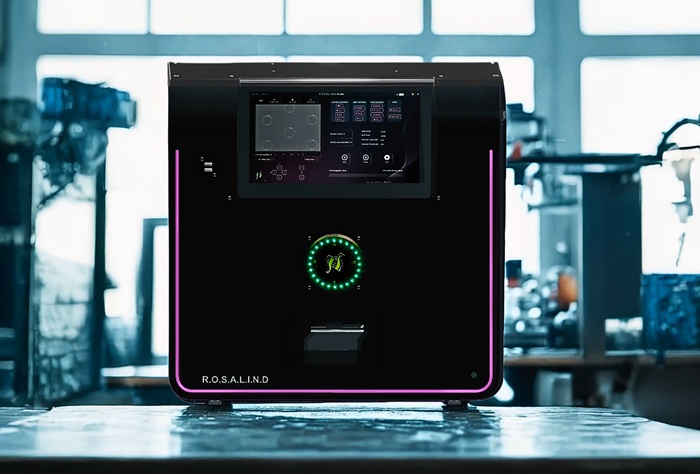Global COVID-19 Diagnostic Market to Reach USD 65.75 Billion by 2028
|
By LabMedica International staff writers Posted on 13 Jul 2021 |

Illustration
The global COVID-19 diagnostics market is predicted to grow from USD 49 billion in 2020 and register a stable CAGR of 3.5% from 2021-2028 to reach USD 65.75 billion in 2028, driven by the extensive use of coronavirus diagnostic kit to detect any traces of the virus quickly.
These are the latest findings of Research Dive (Pune, India), a market research firm.
The widespread effect of COVID-19 was felt all over the world which led to a drastic increase in the requirement for effective and efficient diagnostics solutions. The lockdown rules were implemented to further curb the rise of the virus among people. Though entire countries were shut down, several hospitals, medical labs, and clinics witnesses a surge in people coming in to get themselves tested for the virus. If people need to travel for essential reasons, they need to be in possession of a negative rt-PCR test. This constant need for the virus detection and initiatives to free the world from the virus have contributed to the growth of the COVID-19 diagnostics market.
In the past couple of years, the world has experiences multiple surges and drops in the coronavirus cases around the world. Several healthcare experts have been constantly working on finding new and quicker ways to provide a diagnosis. These efforts by professionals to conduct maximum number of antibody as well as RT-PCR tests in a day are expected to boost the growth of the market. The rural population isn't well aware of the risks of not getting testing. To add further, the risk of being isolated from society due to the fear of contracting the virus has been a hindrance in the growth of the market. Multiple initiatives by the government and efforts by medical professionals to test people frequently and initiate advanced testing technologies are further expected to provide growth opportunities for the market.
By product and services, the services sub-segment is expected to record revenue of USD 31.67 billion. Due to people being exposed to the coronavirus, many service providers have been ensuring that everyone is tested with the use of the latest methods. This is set to further enhance market growth. By samples type, the nasopharyngeal sub-segment is set to garner hold the highest market share with revenue of USD 26.48 billion in the analysis period. The rtPCR tests require nasal swabs which provide the most accurate results post testing. This factor is set to add to the market growth.
By test type, the antibody (serology) sub-segment is set to gain revenue of USD 15.12 billion by 2028. This growth is a result of the ability of serology tests to accurately detect the presence of the COVID-19 virus within the collected samples. By mode, the point-of-care sub-segment is expected to gain revenue of USD 38.50 billion in the analysis period due to the increase in manufacture of testing kits. These tests are known to provide accurate results, thereby adding to the market growth. Based on end user, the laboratories sub-segment is set to contribute to the steady growth of the market with revenue of USD 25.74 billion in the forecast period. Most of the COVID-19 cases were confirmed in labs, especially due to the large number of people opting to get it done with the help of professionals.
Related Links:
Research Dive
These are the latest findings of Research Dive (Pune, India), a market research firm.
The widespread effect of COVID-19 was felt all over the world which led to a drastic increase in the requirement for effective and efficient diagnostics solutions. The lockdown rules were implemented to further curb the rise of the virus among people. Though entire countries were shut down, several hospitals, medical labs, and clinics witnesses a surge in people coming in to get themselves tested for the virus. If people need to travel for essential reasons, they need to be in possession of a negative rt-PCR test. This constant need for the virus detection and initiatives to free the world from the virus have contributed to the growth of the COVID-19 diagnostics market.
In the past couple of years, the world has experiences multiple surges and drops in the coronavirus cases around the world. Several healthcare experts have been constantly working on finding new and quicker ways to provide a diagnosis. These efforts by professionals to conduct maximum number of antibody as well as RT-PCR tests in a day are expected to boost the growth of the market. The rural population isn't well aware of the risks of not getting testing. To add further, the risk of being isolated from society due to the fear of contracting the virus has been a hindrance in the growth of the market. Multiple initiatives by the government and efforts by medical professionals to test people frequently and initiate advanced testing technologies are further expected to provide growth opportunities for the market.
By product and services, the services sub-segment is expected to record revenue of USD 31.67 billion. Due to people being exposed to the coronavirus, many service providers have been ensuring that everyone is tested with the use of the latest methods. This is set to further enhance market growth. By samples type, the nasopharyngeal sub-segment is set to garner hold the highest market share with revenue of USD 26.48 billion in the analysis period. The rtPCR tests require nasal swabs which provide the most accurate results post testing. This factor is set to add to the market growth.
By test type, the antibody (serology) sub-segment is set to gain revenue of USD 15.12 billion by 2028. This growth is a result of the ability of serology tests to accurately detect the presence of the COVID-19 virus within the collected samples. By mode, the point-of-care sub-segment is expected to gain revenue of USD 38.50 billion in the analysis period due to the increase in manufacture of testing kits. These tests are known to provide accurate results, thereby adding to the market growth. Based on end user, the laboratories sub-segment is set to contribute to the steady growth of the market with revenue of USD 25.74 billion in the forecast period. Most of the COVID-19 cases were confirmed in labs, especially due to the large number of people opting to get it done with the help of professionals.
Related Links:
Research Dive
Latest COVID-19 News
- New Immunosensor Paves Way to Rapid POC Testing for COVID-19 and Emerging Infectious Diseases
- Long COVID Etiologies Found in Acute Infection Blood Samples
- Novel Device Detects COVID-19 Antibodies in Five Minutes
- CRISPR-Powered COVID-19 Test Detects SARS-CoV-2 in 30 Minutes Using Gene Scissors
- Gut Microbiome Dysbiosis Linked to COVID-19
- Novel SARS CoV-2 Rapid Antigen Test Validated for Diagnostic Accuracy
- New COVID + Flu + R.S.V. Test to Help Prepare for `Tripledemic`
- AI Takes Guesswork Out Of Lateral Flow Testing
- Fastest Ever SARS-CoV-2 Antigen Test Designed for Non-Invasive COVID-19 Testing in Any Setting
- Rapid Antigen Tests Detect Omicron, Delta SARS-CoV-2 Variants
- Health Care Professionals Showed Increased Interest in POC Technologies During Pandemic, Finds Study
- Set Up Reserve Lab Capacity Now for Faster Response to Next Pandemic, Say Researchers
- Blood Test Performed During Initial Infection Predicts Long COVID Risk
- Low-Cost COVID-19 Testing Platform Combines Sensitivity of PCR and Speed of Antigen Tests
- Finger-Prick Blood Test Identifies Immunity to COVID-19
- Quick Test Kit Determines Immunity Against COVID-19 and Its Variants
Channels
Clinical Chemistry
view channel
Noninvasive Blood-Glucose Monitoring to Replace Finger Pricks for Diabetics
People with diabetes often need to measure their blood glucose multiple times a day, most commonly through finger-prick blood tests or implanted sensors. These methods can be painful, inconvenient, and... Read more
POC Breath Diagnostic System to Detect Pneumonia-Causing Pathogens
Pseudomonas aeruginosa is a major cause of hospital-acquired and ventilator-associated pneumonia, particularly in lung transplant recipients and patients with structural lung disease. Its ability to form... Read moreMolecular Diagnostics
view channel
Endometriosis Blood Test Could Replace Invasive Laparoscopic Diagnosis
Endometriosis affects an estimated 1 in 10 women globally, yet diagnosis can take 7 to 10 years on average due to the invasive nature of laparoscopy and lack of accurate, non-invasive tests.... Read more
World's First NGS-Based Diagnostic Platform Fully Automates Sample-To-Result Process Within Single Device
Rapid point-of-need diagnostics are of critical need, especially in the areas of infectious disease and cancer testing and monitoring. Now, a direct-from-specimen platform that performs genomic analysis... Read more
Rapid Diagnostic Breakthrough Simultaneously Detects Resistance and Virulence in Klebsiella Pneumoniae
Antibiotic resistance is a steadily escalating threat to global healthcare, making common infections harder to treat and increasing the risk of severe complications. One of the most concerning pathogens... Read moreHematology
view channel
MRD Tests Could Predict Survival in Leukemia Patients
Acute myeloid leukemia is an aggressive blood cancer that disrupts normal blood cell production and often relapses even after intensive treatment. Clinicians currently lack early, reliable markers to predict... Read more
Platelet Activity Blood Test in Middle Age Could Identify Early Alzheimer’s Risk
Early detection of Alzheimer’s disease remains one of the biggest unmet needs in neurology, particularly because the biological changes underlying the disorder begin decades before memory symptoms appear.... Read more
Microvesicles Measurement Could Detect Vascular Injury in Sickle Cell Disease Patients
Assessing disease severity in sickle cell disease (SCD) remains challenging, especially when trying to predict hemolysis, vascular injury, and risk of complications such as vaso-occlusive crises.... Read more
ADLM’s New Coagulation Testing Guidance to Improve Care for Patients on Blood Thinners
Direct oral anticoagulants (DOACs) are one of the most common types of blood thinners. Patients take them to prevent a host of complications that could arise from blood clotting, including stroke, deep... Read moreImmunology
view channel
Blood Test Could Identify Colon Cancer Patients to Benefit from NSAIDs
Colon cancer remains a major cause of cancer-related illness, with many patients facing relapse even after surgery and chemotherapy. Up to 40% of people with stage III disease experience recurrence, highlighting... Read moreBlood Test Could Detect Adverse Immunotherapy Effects
Immune checkpoint inhibitors have transformed cancer treatment, but they can also trigger serious immune-related adverse events that damage healthy organs and may become life-threatening if not detected early.... Read moreMicrobiology
view channel
New UTI Diagnosis Method Delivers Antibiotic Resistance Results 24 Hours Earlier
Urinary tract infections affect around 152 million people every year, making them one of the most common bacterial infections worldwide. In routine medical practice, diagnosis often relies on rapid urine... Read more
Breakthroughs in Microbial Analysis to Enhance Disease Prediction
Microorganisms shape human health, ecosystems, and the planet’s climate, yet identifying them and understanding how they are related remains a major scientific challenge. Even with modern DNA sequencing,... Read morePathology
view channel
AI Tool Simultaneously Identifies Genetic Mutations and Disease Type
Interpreting genetic test results remains a major challenge in modern medicine, particularly for rare and complex diseases. While existing tools can indicate whether a genetic mutation is harmful, they... Read more
Rapid Low-Cost Tests Can Prevent Child Deaths from Contaminated Medicinal Syrups
Medicinal syrups contaminated with toxic chemicals have caused the deaths of hundreds of children worldwide, exposing a critical gap in how these products are tested before reaching patients.... Read more
Tumor Signals in Saliva and Blood Enable Non-Invasive Monitoring of Head and Neck Cancer
Head and neck cancers are among the most aggressive malignancies worldwide, with nearly 900,000 new cases diagnosed each year. Monitoring these cancers for recurrence or relapse typically relies on tissue... Read moreTechnology
view channel
Diagnostic Chip Monitors Chemotherapy Effectiveness for Brain Cancer
Glioblastoma is one of the most aggressive and fatal brain cancers, with most patients surviving less than two years after diagnosis. Treatment is particularly challenging because the tumor infiltrates... Read more
Machine Learning Models Diagnose ALS Earlier Through Blood Biomarkers
Amyotrophic lateral sclerosis (ALS) is a rapidly progressive neurodegenerative disease that is notoriously difficult to diagnose in its early stages. Early symptoms often overlap with other neurological... Read moreIndustry
view channel
BD and Penn Institute Collaborate to Advance Immunotherapy through Flow Cytometry
BD (Becton, Dickinson and Company, Franklin Lakes, NJ, USA) has entered into a strategic collaboration with the Institute for Immunology and Immune Health (I3H, Philadelphia, PA, USA) at the University... Read more
























